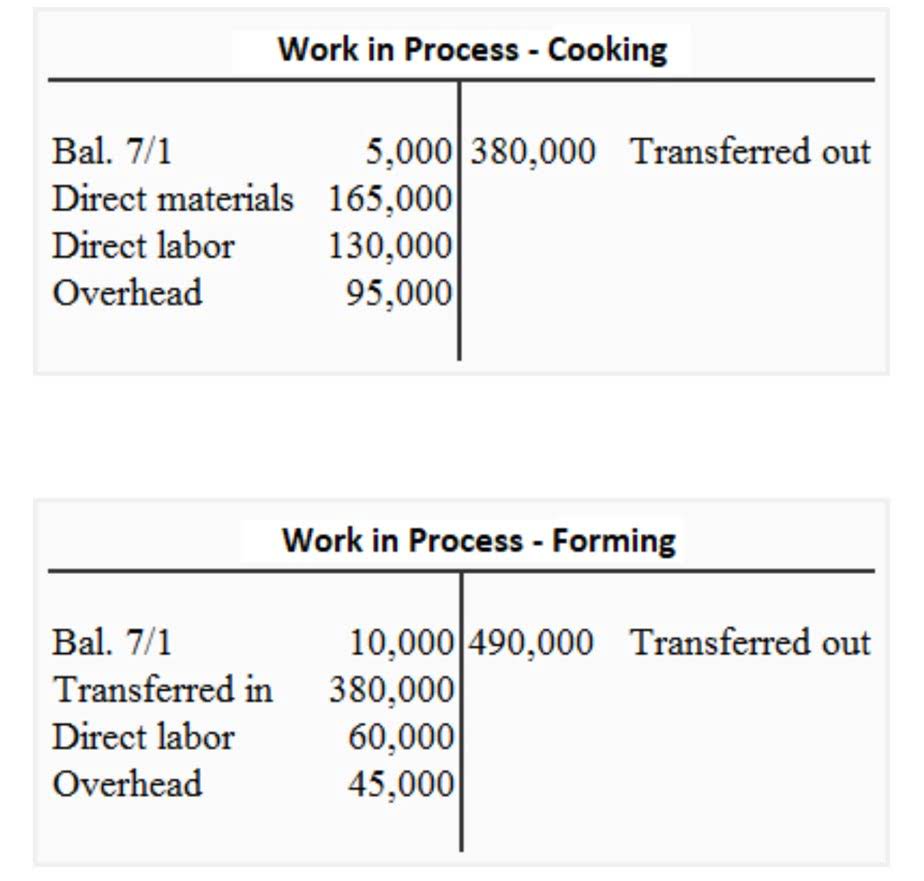
Auditing ensures that financial records are accurately maintained and that the company’s financial health is assessed impartially. By complying with auditing standards, construction firms uphold transparency and accountability in their financial practices, bolstering confidence among investors, clients, and other stakeholders. Adhering to regulatory requirements for financial reporting is a critical aspect of construction project management. This involves ensuring transparency and accuracy in financial statements, which is essential for compliance with regulatory standards. Meeting these https://www.bookstime.com/articles/what-is-expense-management-automation requirements not only demonstrates accountability but also maintains transparency in financial operations, fostering trust among stakeholders.
Key Performance Indicators (KPIs) for Construction Cash Flow
- Learn more about key financial challenges before and during periods of expansion in commercial construction — and strategies to tackle them.
- Cash Flow Frog connects with your accounting software, such as QuickBooks, and automatically imports your cash flow data.
- CFOs who adopt strategic cash flow practices ensure that every dollar is deployed effectively, safeguarding their business from the risks of volatility.
- And you get to make informed decisions based on an accurate cash flow forecast.
- Our Cash Flow Statement Excel Template is more than just a tool; it’s a strategic asset for businesses aiming to optimize their financial strategy.
- This system tracks every expense related to current jobs, providing real-time visibility into cash outflows, while also allowing the analysis of historical project data to inform future cash flow projections.
From project management to accounting, technology integrates various aspects of business operations, providing a unified command center from which to oversee cash flow. Additionally, using credit as a floating device enables construction companies to navigate through periods of negative cash flow until the calm seas of positive cash flow are reached once again. By employing these tactics, businesses can right their ship and sail towards financial stability and success.
Negotiate better payment terms
From optimizing billing practices to gross vs net managing expenses and leveraging technology, these insights aim to bolster a project’s cash position. In this article, we’ll examine the ins and outs of measuring and managing cash flow in construction, including tips on how to maintain positive cash flow on projects. Furthermore, the construction cash flow Excel XLS assists project managers in justifying the use of funds to investors. If you want to analyze your construction company’s cash flow, there are several different revenue streams and expenses to consider. The template typically incorporates sections for categorizing cash transactions, allowing users to distinguish between various sources and uses of funds. This categorization is crucial for identifying trends, understanding the impact of financial decisions, and predicting future cash positions.
Issues that a Project Cash Flow Analysis Can Highlight
- That builds trust, keeps people loyal, and makes getting reliable help on future jobs easier.
- The success of any construction project hinges on robust financial management and accurate cash flow forecasting.
- The real danger of this financial dependence becomes all too clear when unexpected delays in payment occur, which can have catastrophic effects on a business’s cash flow and overall viability.
- Many construction businesses produce cash flow statements on a monthly, quarterly, and annual basis in order to get a sense of their current cash flow situation.
- Cash flow diagrams are graphical representations that show the cash inflows and outflows of a project over time, using horizontal bars or lines.
- It’s critical that companies in the industry address the practices that drain their cash, and build good cash flow management practices to prevent future problems.
- Most companies find it relatively to create projections at the beginning of a project, because there aren’t many moving parts.
Cash outflows of a construction project involve the depletion of cash as expenditures to perform a certain activity. So, it records all the cash inflows and cash outflow of a project on a daily, weekly, and monthly basis. Purchasing and selling assets like real estate and Machinery, lending money to others and collecting the interest, and buying and selling investment instruments are all examples of investing activities. Therefore, the Long-Term Assets area of the balance sheet is connected to this statement section. The corporate world and the building sector are not that dissimilar in terms of principles.

Cost Management in Construction: 4 Key Challenges
At the same time, expenses such as labor, materials, and equipment must be paid consistently to keep the project moving forward. Ensuring enough cash on hand to cover these immediate needs requires careful planning and diligent monitoring of income and expenditures. Strategic timing of payments is also essential to avoid cash shortages that could lead to project delays or the need for costly emergency funding. Challenges in cash flow include payment delays, scope changes, and unexpected costs. These issues can strain finances, impacting project progress and credibility.

Finally, if you have slow-paying customers, try to be more picky about who you’ll work with. Perform credit checks on current or potential customers to see if they have a history of making late payments. Financing cash flow is any funding you get from lenders, owners, or investors. So if you take out a loan, this would calculate into your financing cash flow. Investing cash flow is the cash coming in and going out for longer-term capital investments like stocks, bonds, property, equipment, or the acquisition of another business.
Our data warehousing and business intelligence software transforms organizations by providing information transparency and a single source of truth. Anterra was founded by a team with extensive construction and real estate software experience. Our goal is to improve our clients’ reporting with a combination of prebuilt and user-customizable components. For example, you might discover that in Month 2, you have a $100k inflow but a $180k outflow, for a -$80k net that month, but in Month 3, the inflow is $150k vs. outflows of $120k, for +$30k net. Cumulatively, you’d be -$50k by the end of Month 2, and then -$20k by the end of Month 3, and so on.

- A well-prepared cash flow forecast helps identify periods when additional funds may be needed to bridge these gaps.
- An accurate cash flow projection gives you the knowledge to better predict your cash needs months in advance.
- An effective invoicing system enables quick identification of discrepancies between the amounts billed to the owner and the costs incurred on the project.
- Inaccurate construction budgeting is one of the biggest causes of cash flow issues.
In addition, contractors are also largely responsible for keeping the project on time and on budget, so they simply can’t ‘afford’ to not pay a subcontractor or delay their works going ahead. Forecasting by project helps you spot which ones might cause cash gaps or need extra attention. Many experts suggest reviewing and updating the cash flow forecast monthly (at minimum) or weekly for active projects. With estimated inflows and outflows, map them on a timeline to see each period’s net cash flow. The project schedule is the backbone for your cash flow timing – it tells you when crews will be on-site, when materials are needed, and when milestones will be reached for billing. For example, if the foundation work is in March and the framing is from April to May, those timings will determine when costs are incurred and when you can invoice for those stages.
- Furthermore, the balance sheet and income statement data can also be utilized to generate the statement of cash flows using the indirect approach.
- That’s necessary to be able to pay your suppliers and give employees a paycheck.
- Remember, effective cash flow management is essential for the success and sustainability of construction endeavors.
- Legal protection within contracts is crucial for safeguarding the interests of all parties involved.
- Utilizing cash flow projection reports is crucial for effectively managing and forecasting future cash positions.
- Make sure to update your data regularly, as construction timelines and contingencies may affect initial forecasts.
Make sure to update your data regularly, as construction timelines and contingencies may affect initial forecasts. To get an accurate picture of contractor cash flow, first identify and track the timing of when cash is entering your business versus when cash flow statement for construction project it’s going out. Generally, increases in net cash flow are a positive indicator of financial stability.
